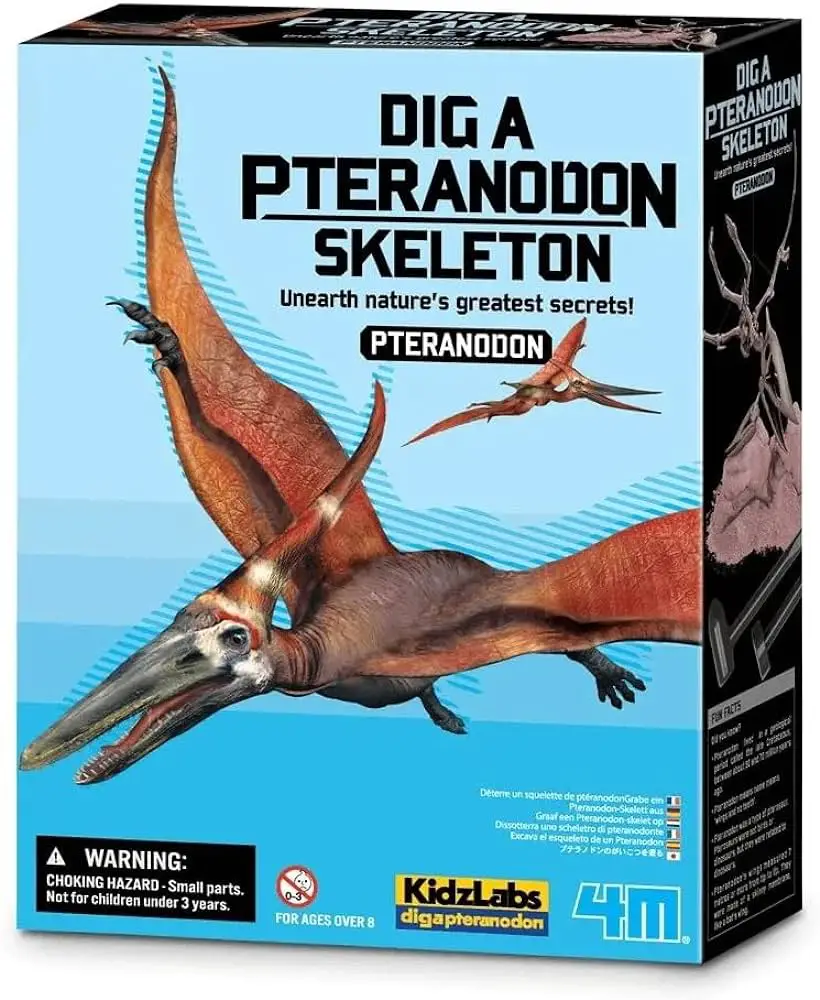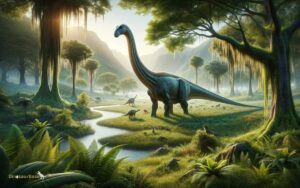Where to Dig Up Dinosaur Bones: Unearth Prehistoric Secrets!
Dinosaur bones can be unearthed at numerous paleontological dig sites worldwide. Museums often organize these excavations for both scientists and volunteers.
Embarking on a journey to discover the remains of the colossal creatures that once roamed our planet can be an exhilarating experience. Many museums, universities, and research institutions offer opportunities to the public to participate in digs. These digs not only satiate the curiosity of dinosaur enthusiasts but also contribute to the valuable research in paleontology.
North America, particularly the United States, has a wealth of dig sites, with states like Montana, Wyoming, and South Dakota being hotspots for dinosaur fossils. Whether you are an aspiring paleontologist, a student, or simply a dinosaur aficionado, joining a dig can provide an authentic glimpse into the fieldwork that uncovers secrets of Earth’s ancient inhabitants.

Uncovering The Past
Imagine stepping back in time, to an era when giants roamed the Earth. The quest to uncover dinosaur bones is not just an exercise in scientific research; it’s an adventure that tells us stories from millions of years ago. This journey not only satisfies our curiosity but also sheds light on life’s grand history.
Why Dinosaurs Fascinate Us
Dinosaurs are the giants of our past. Their fossils act as time capsules, sparking our imagination and desire to understand our planet’s history. These creatures remain a powerful symbol of nature’s wonders.
- Mysteries of size and strength leave us in awe.
- Colorful tales from dinosaur times continue to enchant us.
- They push the boundaries of what we believe is possible.
Key Discoveries In Paleontology
| Discovery | Location | Significance |
|---|---|---|
| Tyrannosaurus Rex | North America | Shaped our understanding of predator behavior. |
| Velociraptor | Mongolia | Revealed new insights into dinosaur intelligence. |
| Argentinosaurus | Argentina | One of the largest dinosaurs ever discovered. |
New discoveries in paleontology continuously rewrite history books. Each fossil found is a piece of the puzzle providing insights into the earth’s biological and geological processes.

Credit: www.amazon.com
Famous Fossil Sites Around The Globe
Dinosaurs roamed the Earth millions of years ago. Today, their remains captivate many. We can find dinosaur bones in several parts of the world. These locations are like windows to the past. Explorers and scientists go to these places to unearth secrets. Let’s look at some famous sites for dinosaur fossils.
The Gobi Desert’s Hidden Treasures
The Gobi Desert is a massive area in Asia. It is well-known for its dinosaur fossils. The hot sands of Gobi have many secrets. Scientists have found dinosaur eggs and bones here. Some dinosaurs discovered in the Gobi Desert include:
- Velociraptor: A fast and fierce predator
- Protoceratops: A sheep-sized herbivore
- Oviraptor: Known for its egg-shaped head
Riches Of The Rocky Mountains
The Rocky Mountains stretch across North America. They are home to layers of history. Fossil hunters find bones in these towering peaks. The Morrison Formation is famous here. It contains many dinosaur fossils. Scientists have uncovered bones of:
- Stegosaurus: Known for its plated back
- Allosaurus: A top predator of its time
- Apatosaurus: A giant long-neck dinosaur
Argentina’s Dinosaur Graveyard
Argentina is famous for its rich history. Its soil holds the remains of dinosaurs. This place is a wonder for fossil lovers. Here, we have found some of the largest dinosaurs. These giants include:
- Argentinosaurus: One of the biggest dinosaurs ever
- Giganotosaurus: Bigger than the famous T-Rex
- Patagotitan: A newly discovered huge herbivore
Tools Of The Trade
Tools of the Trade are the companions for every aspiring fossil hunter. To unleash the secrets of prehistoric times, you need the right equipment. With the precise tools, digging up dinosaur bones transforms from daydreaming into a thrilling hands-on journey through history. Prepare to embark on an archaeological adventure with the essential toolkit for fossil hunting!
Essential Equipment For Fossil Hunting
Starting your fossil quest requires a set of basic tools:
- Geologist’s hammer: Your primary tool for chipping rock
- Chisels and picks: For finer, more precise sediment removal
- Safety glasses: To protect your eyes from flying debris
- Sturdy gloves: A requirement to safeguard your hands
- Notebook and pen: Document findings and locations
- GPS device or map: Never lose your bearings
- Brushes: For cleaning and revealing delicate fossils
Ensure each item in your kit is of high quality for the best digging experience.
Techniques For Excavation
Digging up bones is more than just digging holes.
- Survey the site: Look for any exposed fossils on the surface
- Start small: Use a brush to clear dirt and check for fragments
- Go slow: Patience is your ally when exposing fossils
- Make notes: Document the context of your finds
- Be precise: Chisel away from the fossil to prevent damage
Mastering these techniques preserves history for study and admiration.

Credit: store.fieldmuseum.org
Getting Involved
Are you excited about discovering the past? You can dig up dinosaur bones! People of all ages can join in this thrilling adventure. You might uncover secrets hidden for millions of years. Let’s explore how you can start your journey into the world of paleontology.
Joining A Dig: How To Get Started
First, choose your interest area in paleontology. Do you love T-Rex? Or are Triceratops more your style? Once you decide, look for digs that focus on these incredible creatures.
- Research paleontological societies or museums. They often have opportunities.
- Sign up for a dig with a reputable organization.
- Prepare for the conditions. Digs can be hot, cold, or dusty.
- Learn what tools you will need. Some digs provide them for you.
Become a member of a dig team and experience the thrill of discovery!
Citizen Science In Paleontology
Citizen science lets everyone help with scientific research. In paleontology, you can be part of something big!
| Online Databases | Enter fossil finds for scientists to study. |
| Fossil Cleaning | Help prepare fossils in a lab. |
| Field Surveys | Walk the lands and look for fossil clues. |
Each contribution supports important discoveries. You make a real difference in science!
The Future Of Fossil Finding
The quest for uncovering the past never grows old, especially when it leads to dinosaurs. The Future of Fossil Finding looks as promising as ever with ongoing advances in technology and heightened awareness of ethical practices. Let’s dig into what changing landscapes in fossil discovery mean for enthusiasts and scientists alike.
Advancements In Detection Technology
Imagine walking across a vast desert. Now, instead of just hope, you have cutting-edge tools to find ancient treasures beneath your feet. Technology is revolutionizing fossil hunting, from ground-penetrating radar to drones equipped with LiDAR. These tools help scientists see what’s under the ground without moving a single rock.
- Ground-penetrating radar sends radio waves into the earth and detects patterns of what lies below.
- Drones with LiDAR create detailed maps by bouncing light off the ground and measuring the reflections.
- Satellite imagery can identify potential fossil sites from space, guiding paleontologists to promising locations.
With each innovation, finding fossils becomes more accurate and less harmful to the environment.
Ethics And Legality In Fossil Collection
The thrill of discovery must be balanced with respect for the law and nature. Fossil collection carries ethical considerations and legal requirements.
- Fossils on public land often cannot be collected without permission.
- Nations have laws to protect their natural heritage, banning export without consent.
- Ethically, scientists work to preserve sites and share knowledge rather than sell finds.
Responsible fossil finding ensures these pieces of history benefit all, not just a few. As we step into the future, these guiding principles are more important than ever.
Preserving History
Fascination with dinosaurs stretches across ages. Unearthing their remains is thrilling. But what about after the discovery? Preserving these relics is vital. It ensures future generations can experience the wonder. Well-preserved sites offer more insights into the past.
Conservation Efforts For Dig Sites
Dig sites are windows to history. But they are fragile. Without careful measures, we could lose them. Conservation begins at the dig itself. Scientists follow strict protocols. They document everything. They use advanced tools to protect the site.
- Local laws protect many dig sites.
- Special materials cover and cushion bones.
- Teams train to handle fossils gently.
- Continuous research identifies better conservation techniques.
Every dig site has a unique plan. This ensures its preservation and study for many years. Conservation is a commitment to protect our shared heritage.
The Role Of Museums And Research Institutions
Museums and research institutions play a critical role. They hold the key to knowledge. They turn findings into learning experiences.
- They house and care for fossils and artifacts.
- Experts work to restore and preserve these pieces.
- Exhibits bring the public closer to Earth’s history.
- Education programs inspire future scientists.
Museums collaborate with dig sites. They ensure long-term conservation. They promote research and understanding of prehistoric life.

Credit: store.fieldmuseum.org
Frequently Asked Questions For Where To Dig Up Dinosaur Bones
Where Is The Best Place To Dig Up Dinosaur Bones?
The best places to find dinosaur bones are regions with vast sedimentary rock formations, such as the Morrison Formation in the western United States. Notable sites include Dinosaur National Monument in Utah and the Hell Creek Formation in Montana. Always seek professional guidance before excavating.
Where Are You Most Likely To Find Dinosaur Bones?
Dinosaur bones are most commonly found in sedimentary rock formations and areas once rich in prehistoric life, like riverbeds and deserts.
Can You Dig Up Dinosaur Bones?
Yes, you can dig up dinosaur bones, but only if you have the necessary permits and qualifications. Unauthorized excavation is illegal and can damage important scientific sites.
Are You Allowed To Keep Dinosaur Bones?
Ownership of dinosaur bones depends on local laws. Private land finds can often be kept; fossils on public land typically belong to the government. Always check regional regulations before collection.
Conclusion
Embarking on a prehistoric adventure promises excitement and education for all ages. Whether you explore the dusty trails of Montana or the rich sites of Argentina, the experience is unforgettable. Remember to respect the sites and keep the thrill of discovery alive.
So, grab your tools and set out on a journey where history awaits beneath your feet.




